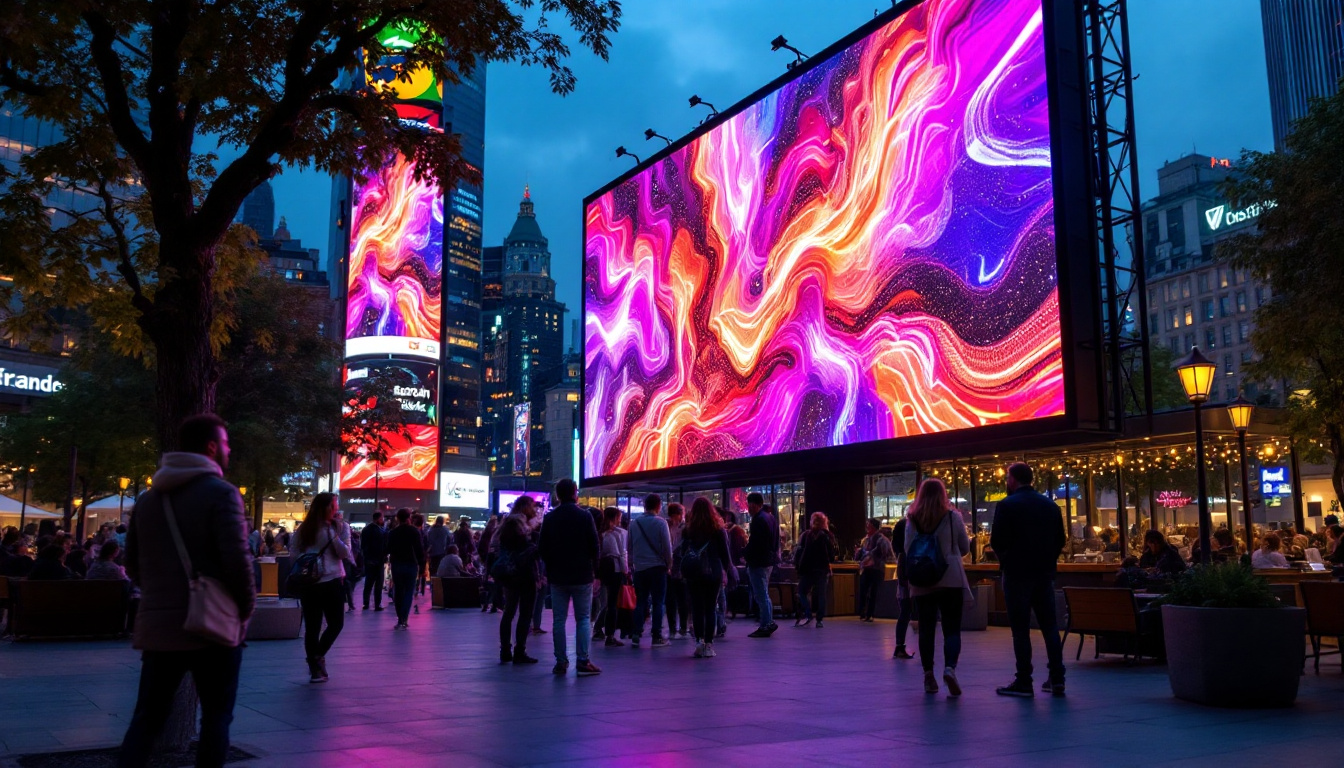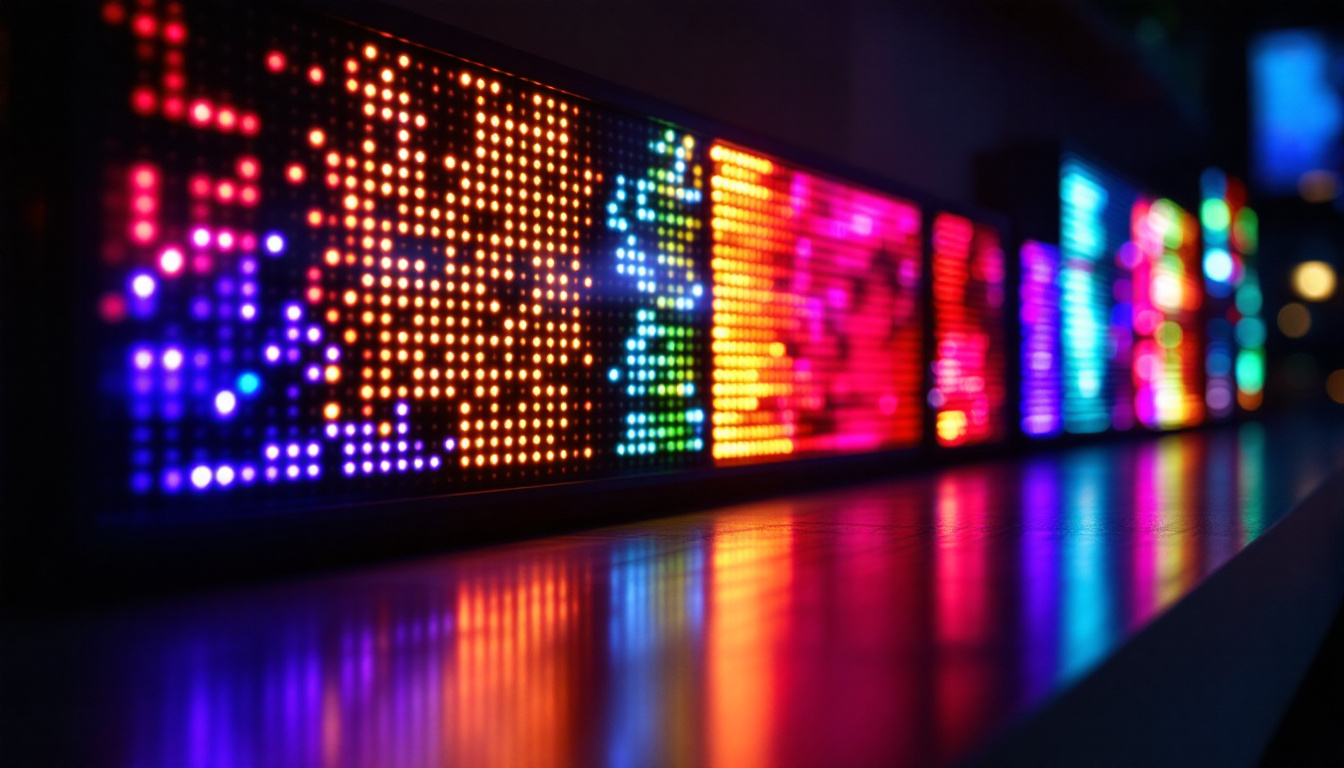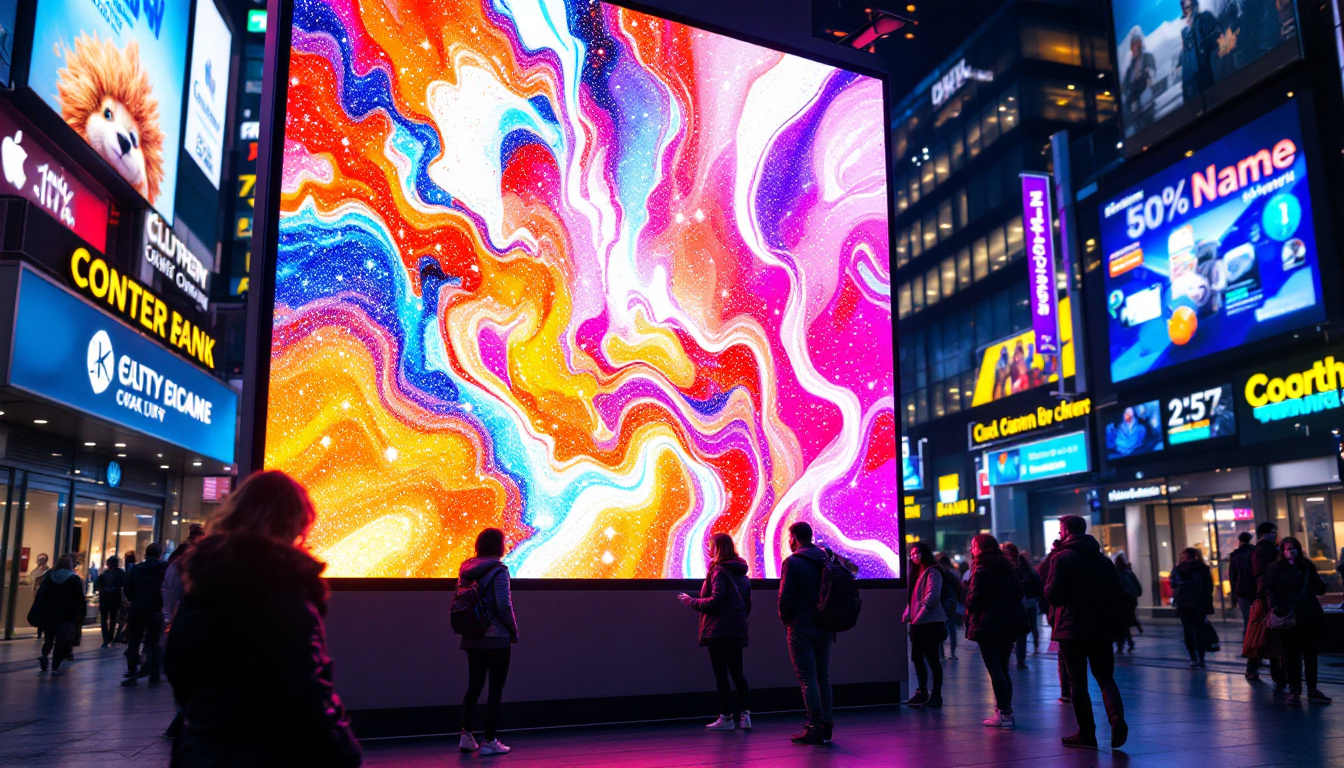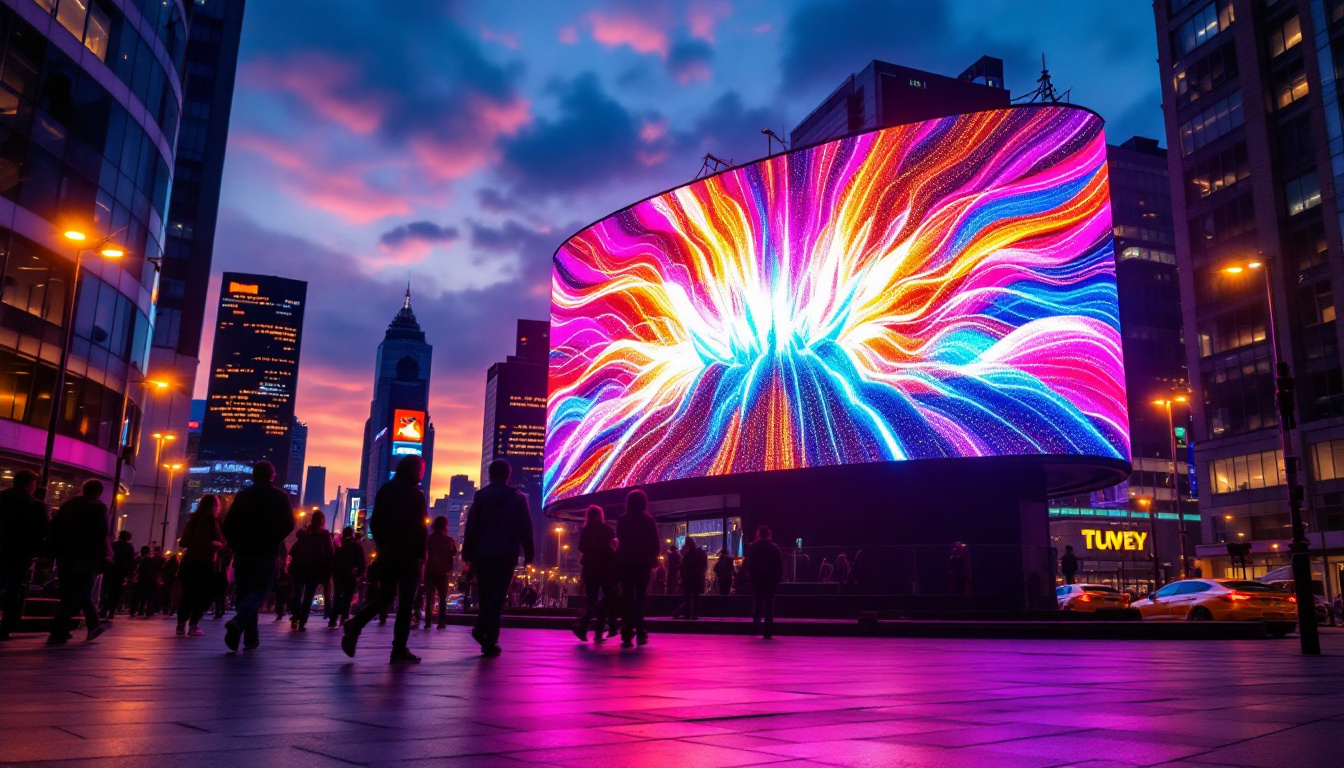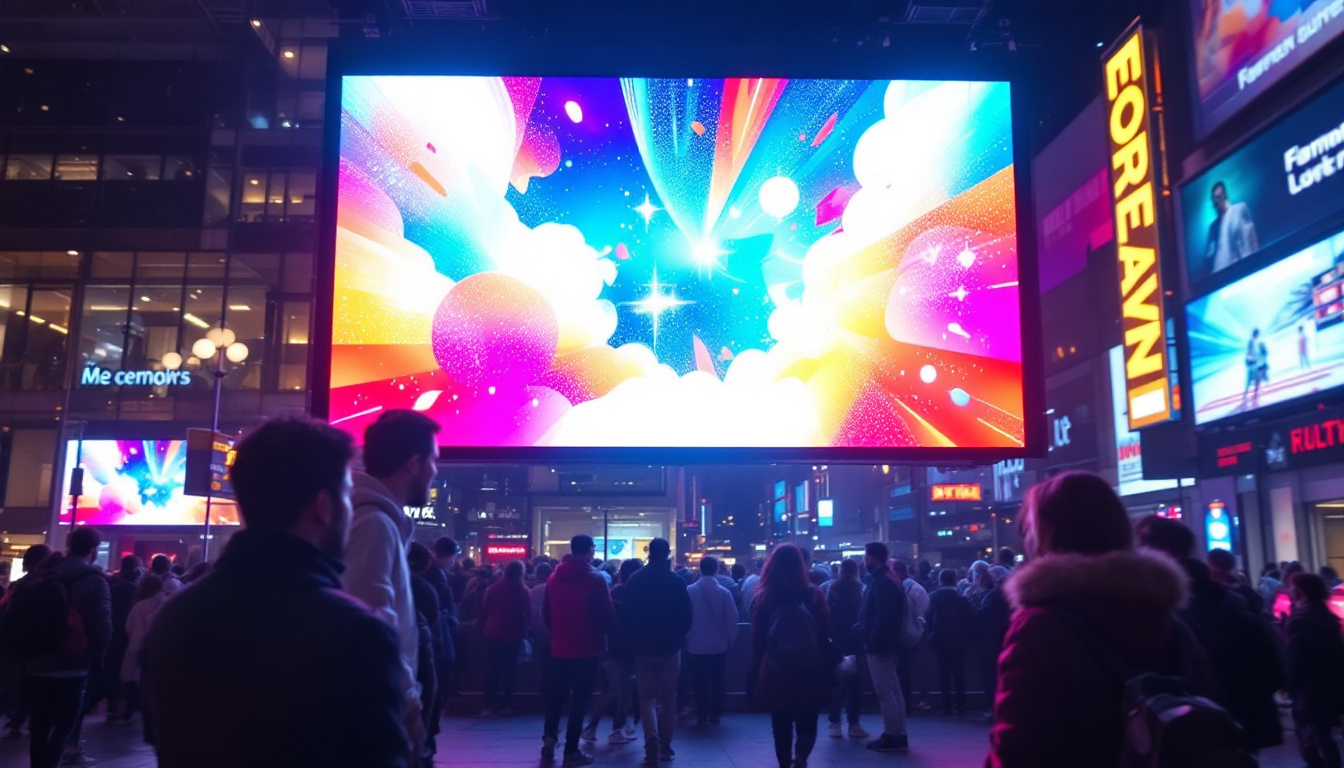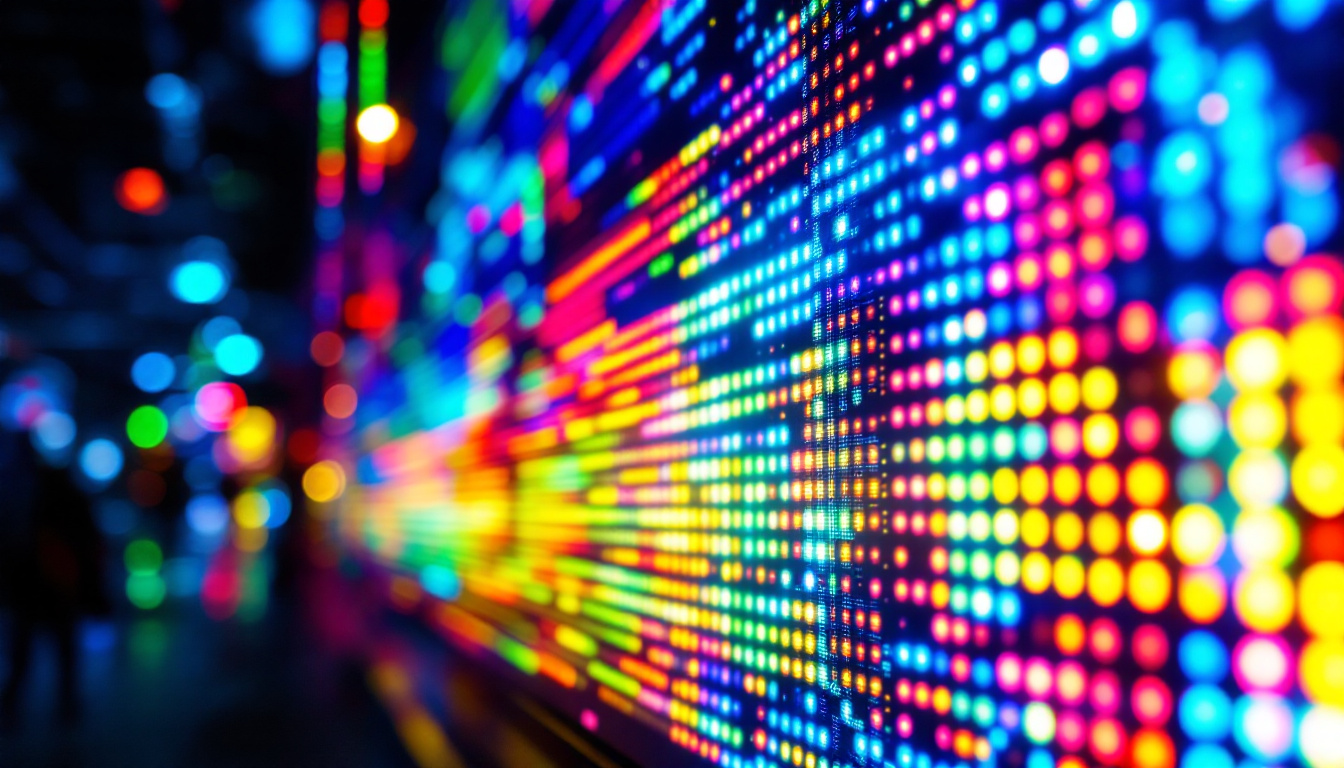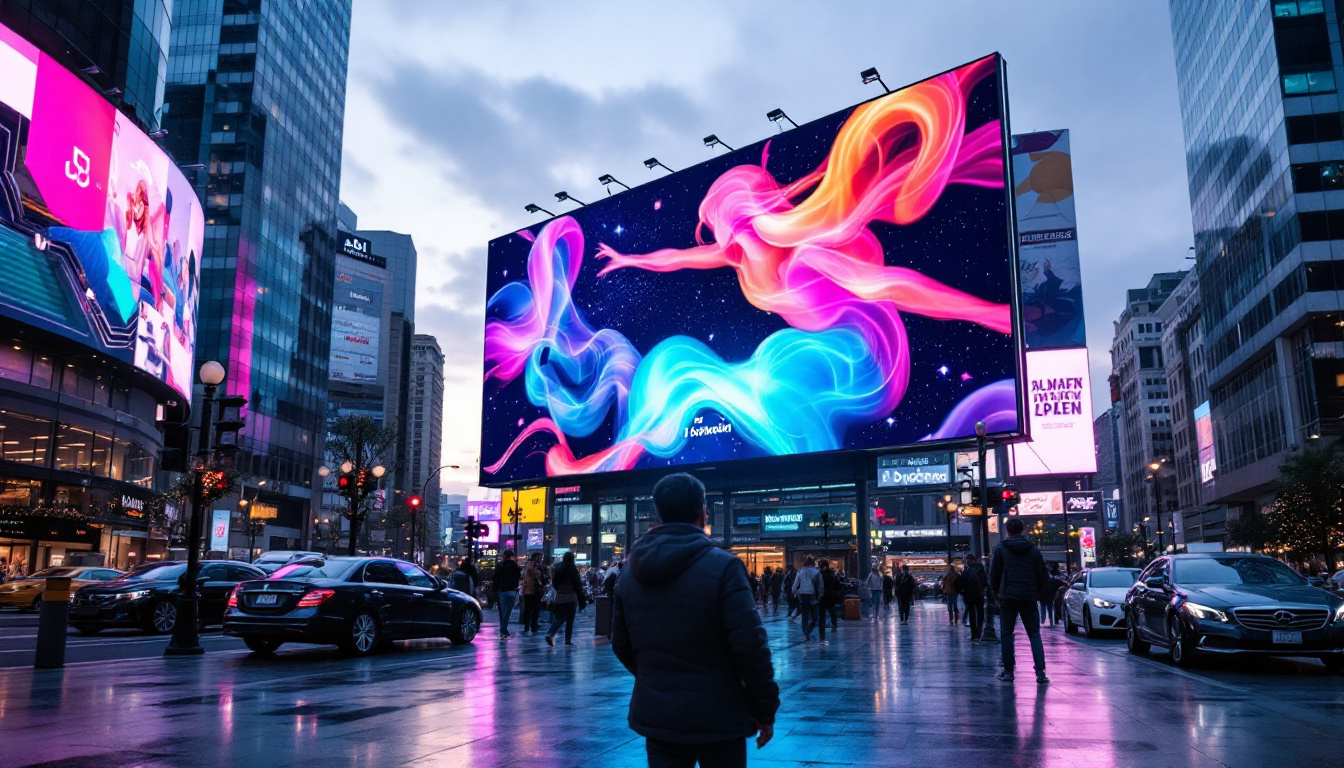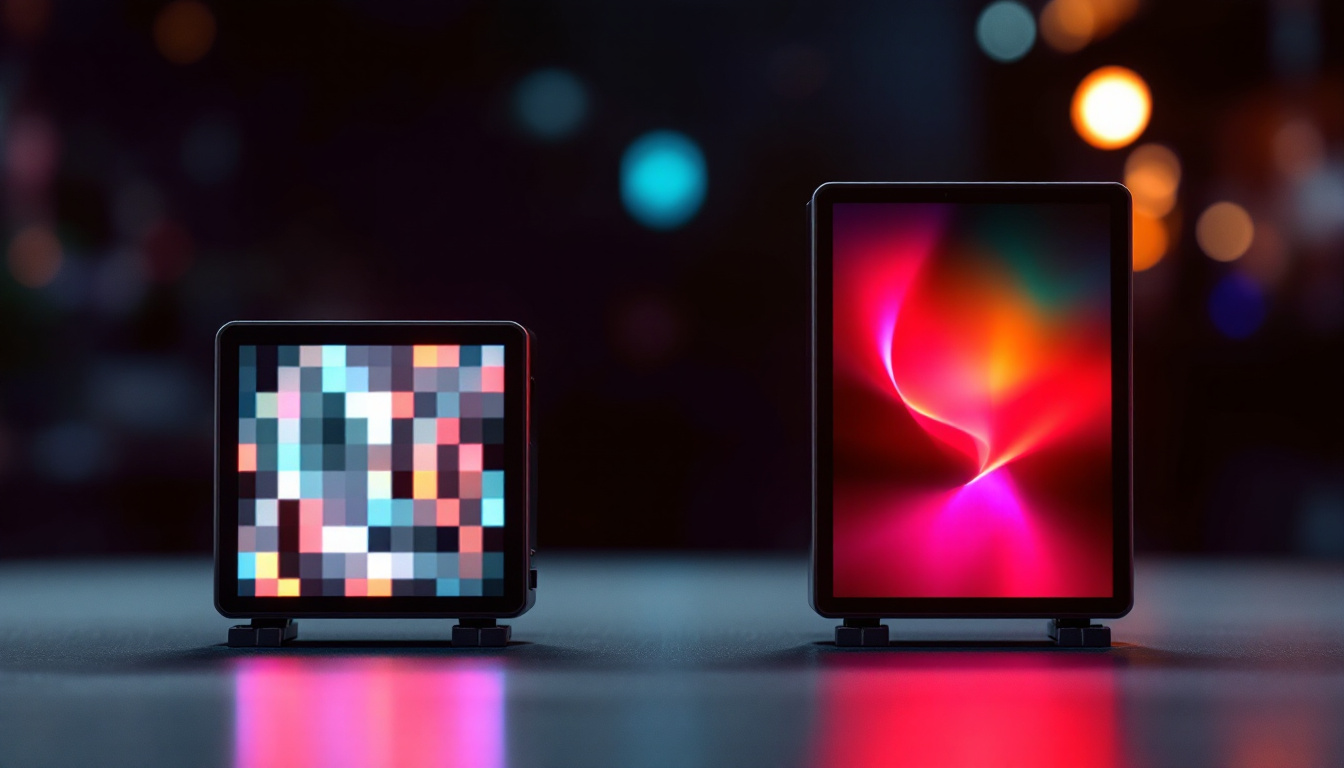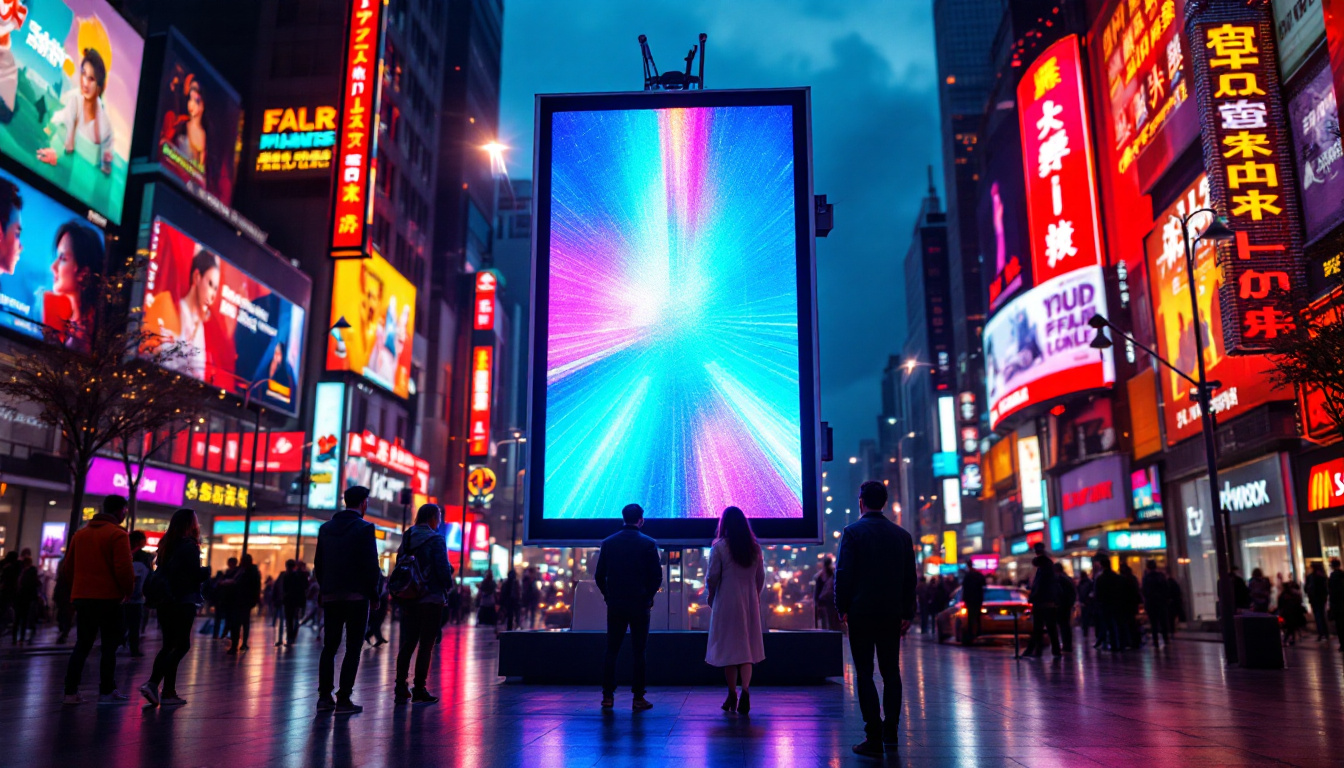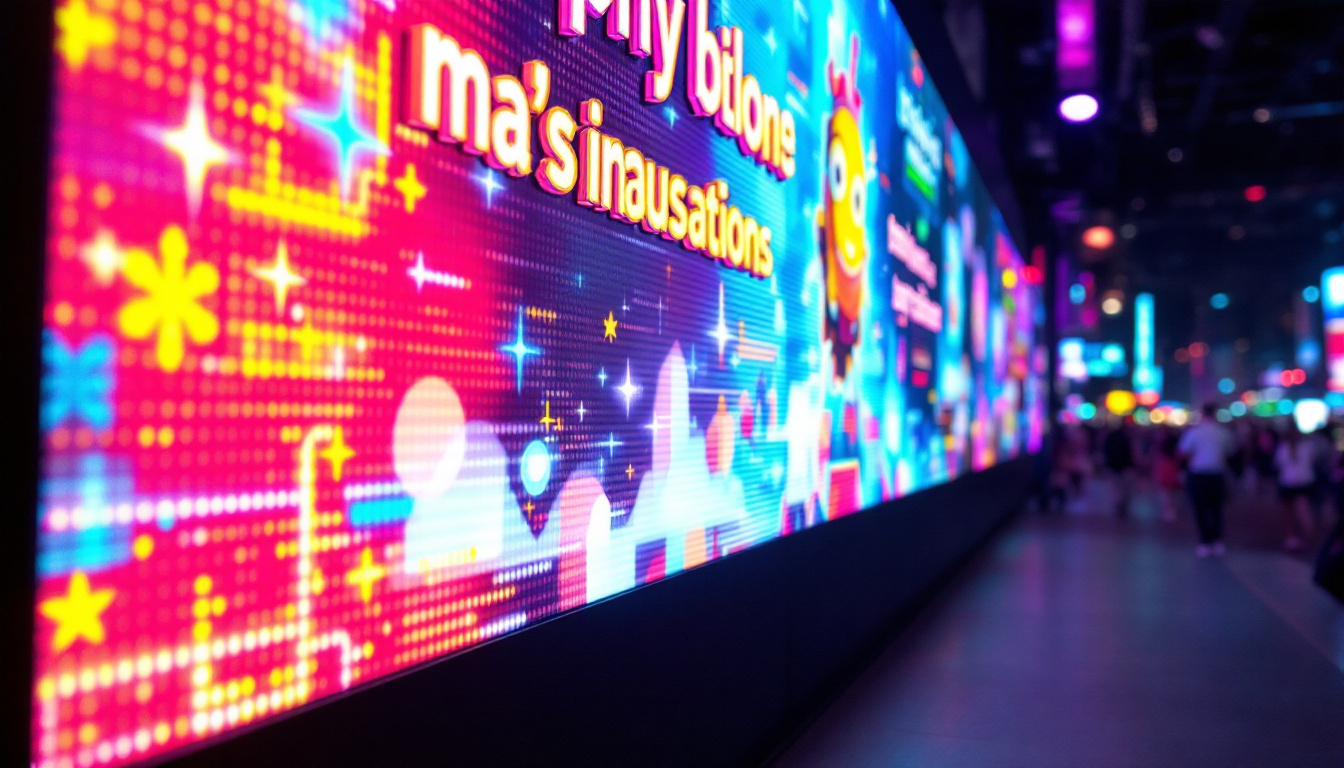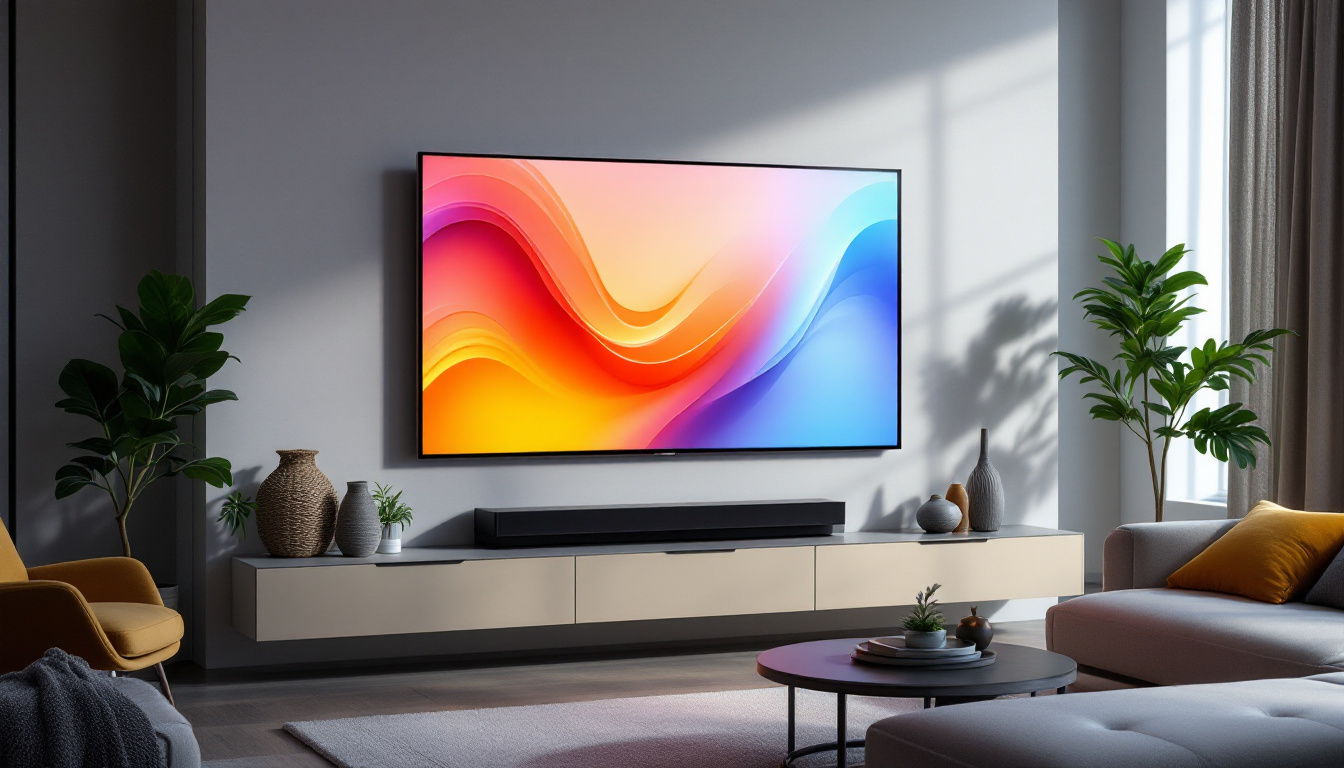Clear LCD Display: LED Display Explained
In the realm of visual technology, displays have undergone significant transformations over the years. Among the most prominent advancements are LCD (Liquid Crystal Display) and LED (Light Emitting Diode) technologies. While these terms are often used interchangeably, they refer to different aspects of display technology. This article aims to clarify the distinctions between clear LCD displays and LED displays, exploring their functionalities, advantages, and applications.
Understanding LCD Technology
Liquid Crystal Display (LCD) technology is a method of displaying images using liquid crystals sandwiched between two layers of glass or plastic. These crystals manipulate light to create images, which is why LCD screens are widely used in televisions, computer monitors, and smartphones. The versatility of LCD technology has made it a cornerstone in modern display solutions, allowing for thinner, lighter, and more energy-efficient screens compared to older technologies like cathode ray tubes (CRTs).
How LCD Works
At its core, LCD technology relies on the manipulation of light. When an electric current passes through the liquid crystals, they align in such a way that they can either block or allow light to pass through. This process is facilitated by a backlight, typically made of fluorescent or LED lights, which illuminates the display. The combination of colored filters and liquid crystals produces the vibrant images we see on screens today. Additionally, advancements in LCD technology have led to the development of features such as high dynamic range (HDR), which enhances the contrast and color accuracy, providing a more immersive viewing experience.
Types of LCD Displays
There are several types of LCD displays, each with unique characteristics. The most common types include:
- Twisted Nematic (TN): Known for fast response times and affordability, TN panels are popular in gaming monitors but often have limited viewing angles and color reproduction.
- In-Plane Switching (IPS): IPS panels provide better color accuracy and wider viewing angles, making them ideal for graphic design and professional use.
- Vertical Alignment (VA): VA panels offer high contrast ratios and deeper blacks, making them suitable for watching movies and gaming, though they may have slower response times.
In addition to these common types, there are also specialized LCD technologies such as Advanced Fringe Field Switching (AFFS) and Super In-Plane Switching (S-IPS), which aim to enhance performance in specific applications. For instance, AFFS technology improves viewing angles and color reproduction even further than standard IPS panels, making it a great choice for high-end displays. Meanwhile, S-IPS offers a balance between the speed of TN panels and the color fidelity of IPS panels, catering to users who require both quick response times and accurate color representation. As the demand for high-quality displays continues to rise, manufacturers are constantly innovating to push the boundaries of what LCD technology can achieve.
The Rise of LED Technology
Light Emitting Diode (LED) technology has revolutionized display systems by providing brighter, more energy-efficient lighting solutions. While LED displays are often associated with LCD technology, they represent a different approach to how images are produced on screens. The evolution of LED technology has not only transformed the way we view content but has also paved the way for innovative applications in various fields, from advertising to automotive lighting.
LED vs. LCD: The Key Differences
While both LED and LCD technologies are used in modern displays, the key difference lies in the light source. LCDs use a fluorescent backlight, whereas LED displays utilize light-emitting diodes. This distinction leads to several advantages for LED displays:
- Brightness: LED displays can achieve higher brightness levels, making them suitable for various lighting conditions.
- Energy Efficiency: LEDs consume less power compared to traditional fluorescent backlights, resulting in lower energy bills.
- Thin Form Factor: The compact nature of LEDs allows for slimmer designs, which is particularly advantageous for modern televisions and monitors.
Moreover, the longevity of LED technology is noteworthy; LEDs can last up to 50,000 hours or more, significantly reducing the frequency of replacements and maintenance costs. This durability not only benefits consumers but also contributes to environmental sustainability by minimizing electronic waste. As the demand for eco-friendly solutions increases, LED technology stands out as a frontrunner in the quest for greener alternatives.
Types of LED Displays
LED technology can be categorized into several types, each serving different purposes:
- Edge-Lit LED: LEDs are placed along the edges of the screen, providing backlighting that is less uniform but allows for thinner designs.
- Direct-Lit LED: LEDs are placed directly behind the screen, offering more uniform brightness and better contrast.
- OLED (Organic LED): A newer technology where each pixel emits its own light, resulting in exceptional color accuracy and deep blacks.
In addition to these types, there are also advancements in LED technology that have led to the development of Mini-LED and Micro-LED displays. Mini-LEDs use smaller diodes to create more precise lighting zones, enhancing contrast and improving HDR (High Dynamic Range) performance. On the other hand, Micro-LED technology takes this a step further by utilizing microscopic LEDs that can be arranged in various configurations, allowing for modular displays that can be customized to fit any size or shape. This flexibility opens up exciting possibilities for future display innovations, particularly in the realms of virtual reality and augmented reality.
Advantages of Clear LCD Displays
Clear LCD displays have their own set of advantages that make them a popular choice in various applications. Understanding these benefits can help consumers make informed decisions when selecting a display technology.
Image Clarity and Color Accuracy
One of the standout features of clear LCD displays is their ability to produce sharp images with accurate color reproduction. This is particularly important for professionals in fields such as graphic design, photography, and video editing, where color fidelity is paramount. The use of advanced color calibration techniques further enhances the overall viewing experience. Additionally, many clear LCD displays support a wide color gamut, allowing for the representation of vibrant hues and subtle shades that can elevate the quality of visual content. This capability not only benefits creative professionals but also enriches the viewing experience for everyday users, making movies and games more immersive.
Wide Viewing Angles
Many modern LCD displays, especially those utilizing IPS technology, offer wide viewing angles. This means that viewers can enjoy consistent color and brightness levels even when viewing the screen from an angle. This feature is particularly advantageous in collaborative environments, such as offices or classrooms, where multiple people may need to view the screen simultaneously. Furthermore, the wide viewing angles reduce the likelihood of color distortion, ensuring that presentations and shared content maintain their integrity regardless of where the audience is seated. This aspect is crucial in settings such as conference rooms, where effective communication relies on everyone having a clear view of the displayed information.
Energy Efficiency
Another significant advantage of clear LCD displays is their energy efficiency. Compared to older display technologies, modern LCDs consume less power while providing superior brightness and clarity. This not only helps in reducing electricity bills but also contributes to a lower carbon footprint, making them a more environmentally friendly option. Many manufacturers are now focusing on developing displays that meet energy-saving certifications, which can be a deciding factor for businesses looking to enhance their sustainability efforts. Additionally, the longevity of LCD technology means that users can expect their displays to last longer, further maximizing their investment.
Versatility in Design
Clear LCD displays are also celebrated for their versatility in design, allowing them to fit seamlessly into a variety of environments. Whether it’s a sleek, modern office, a cozy home theater, or a bustling retail space, these displays can be tailored to suit the aesthetic and functional needs of each setting. With options for frameless designs and customizable mounting solutions, users can create a visually appealing setup that complements their decor. This adaptability extends to interactive applications as well, where touch-enabled clear LCD displays can be used for kiosks or information points, enhancing user engagement and interactivity.
Applications of Clear LCD Displays
Clear LCD displays are utilized across a diverse range of applications, showcasing their versatility and effectiveness. From consumer electronics to professional settings, these displays have become integral to modern technology.
Consumer Electronics
In the realm of consumer electronics, clear LCD displays are ubiquitous. They are found in televisions, smartphones, tablets, and laptops, providing users with vibrant visuals for entertainment and productivity. The clarity and color accuracy of these displays enhance the overall user experience, making them a preferred choice for manufacturers.
Medical Imaging
Clear LCD displays are also critical in the medical field, particularly in imaging technologies such as MRI and ultrasound machines. High-resolution displays are essential for accurately interpreting medical images, allowing healthcare professionals to make informed decisions regarding patient care.
The Future of Display Technology
As technology continues to evolve, the future of display technology promises even more exciting advancements. Innovations in both LCD and LED technologies are paving the way for enhanced visual experiences.
MicroLED Technology
One of the most promising developments in display technology is MicroLED. This technology combines the benefits of both LCD and OLED, offering self-emissive pixels that provide exceptional brightness and color accuracy. MicroLED displays are expected to be more energy-efficient and have longer lifespans compared to traditional LED displays.
Flexible Displays
Another area of growth is flexible display technology. This innovation allows screens to be bent or curved, opening up new possibilities for device design. Flexible displays could lead to foldable smartphones, rollable televisions, and other creative applications that enhance user interaction.
Conclusion
In summary, clear LCD displays and LED displays represent two distinct yet complementary technologies in the world of visual displays. Understanding their differences, advantages, and applications is essential for consumers and professionals alike. As advancements continue to shape the future of display technology, it is clear that both LCD and LED will play significant roles in delivering high-quality visual experiences.
Whether for personal use or professional applications, the choice between clear LCD and LED displays will ultimately depend on individual needs and preferences. As technology progresses, staying informed about these developments will ensure that users can make the best decisions for their display requirements.
Discover Cutting-Edge LED Displays with LumenMatrix
Ready to elevate your visual experience with the latest in display technology? LumenMatrix, a pioneer in LED innovation, invites you to explore our comprehensive range of LED display modules. From the immersive Indoor LED Wall Display to the dynamic Outdoor LED Wall Display, and from the versatile Vehicle LED Display to the sleek LED Poster Display, our solutions are designed to captivate and engage. We also offer specialized options like LED Sports Display, Floor LED Display, Custom LED Display, All-in-One LED Display, and LED Transparent Display. Embrace the future of visual communication with LumenMatrix and let our LED display solutions transform your brand’s visibility. Check out LumenMatrix LED Display Solutions today and start creating unforgettable visual narratives.





